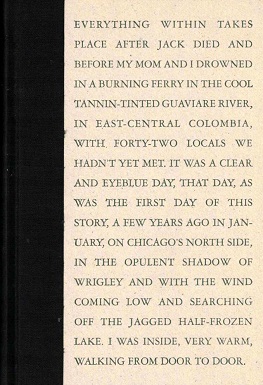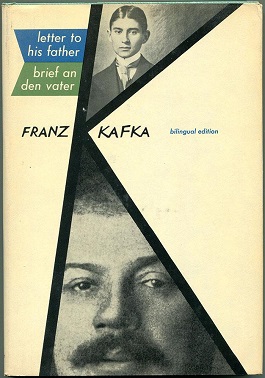
Gonzo journalism is a style of journalism that is written without claims of objectivity, often including the reporter as part of the story using a first-person narrative. The word "gonzo" is believed to have been first used in 1970 to describe an article about the Kentucky Derby by Hunter S. Thompson, who popularized the style. It is an energetic first-person participatory writing style in which the author is a protagonist, and it draws its power from a combination of social critique and self-satire. It has since been applied to other subjective artistic endeavors.

Hunter Stockton Thompson was an American journalist and author. He rose to prominence with the publication of Hell's Angels (1967), a book for which he spent a year living with the Hells Angels motorcycle club to write a first-hand account of their lives and experiences. In 1970, he wrote an unconventional article titled "The Kentucky Derby Is Decadent and Depraved" for Scanlan's Monthly, which further raised his profile as a countercultural figure. It also set him on the path to establishing his own subgenre of New Journalism that he called "Gonzo", a journalistic style in which the writer becomes a central figure and participant in the events of the narrative.

Uncle Duke is a fictional character in the comic strip Doonesbury by Garry Trudeau. He is nominally Zonker Harris's uncle, albeit an "uncle by courtesy" only. Duke appeared in the strip July 1974 and was originally a straightforward caricature of the gonzo journalist Hunter S. Thompson, but eventually took on a life of his own and a succession of ill-fated ventures in the areas of politics, business and crime.

"The Fall of the House of Usher" is a short story by American writer Edgar Allan Poe, first published in 1839 in Burton's Gentleman's Magazine, then included in the collection Tales of the Grotesque and Arabesque in 1840. The short story, a work of Gothic fiction, includes themes of madness, family, isolation, and metaphysical identities.

Ralph Idris Steadman is a British illustrator best known for his collaboration with the American writer Hunter S. Thompson. Steadman is renowned for his political and social caricatures, cartoons and picture books.

You Shall Know Our Velocity! is a 2002 novel by Dave Eggers. It was Eggers's debut novel, following the success of his memoir A Heartbreaking Work of Staggering Genius (2000).

"The Celebrated Jumping Frog of Calaveras County" is an 1865 short story by Mark Twain. It was his first great success as a writer and brought him national attention. The story has also been published as "Jim Smiley and His Jumping Frog" and "The Notorious Jumping Frog of Calaveras County". In it, the narrator retells a story he heard from a bartender, Simon Wheeler, at the Angels Hotel in Angels Camp, California, about the gambler Jim Smiley. The narrator describes him: "If he even seen a straddle bug start to go anywheres, he would bet you how long it would take him to get to wherever he going to, and if you took him up, he would foller that straddle bug to Mexico but what he would find out where he was bound for and how long he was on the road."

Raoul Duke is the partially fictionalized author surrogate character and sometimes pseudonym used by Hunter S. Thompson as the main character and antihero for many of his works. He is perhaps best known as the narrator for his 1971 autobiographical novel Fear and Loathing in Las Vegas. The book was originally written under the name Raoul Duke. The character wears a bucket hat and yellow tinted aviator sunglasses.

Danse Macabre is a 1981 non-fiction book by Stephen King, about horror fiction in print, TV, radio, film and comics, and the influence of contemporary societal fears and anxieties on the genre. When the book was republished King included a new Forenote dated June 1983. And when the book was republished on February 23, 2010, it included an additional new forenote in the form of a longer essay entitled "What's Scary".

Where the Buffalo Roam is a 1980 American semi-biographical comedy film which loosely depicts author Hunter S. Thompson's rise to fame in the 1970s and his relationship with Chicano attorney and activist Oscar "Zeta" Acosta. The film was produced and directed by Art Linson. Bill Murray portrayed Thompson and Peter Boyle portrayed Acosta, who is referred to in the film as Carl Lazlo, Esq. A number of other names, places, and details of Thompson's life are also changed.

"The Outsider" is a short story by American horror writer H. P. Lovecraft. Written between March and August 1921, it was first published in Weird Tales, April 1926. In this work, a mysterious individual who has been living alone in a castle for as long as he can remember decides to break free in search of human contact and light. "The Outsider" is one of Lovecraft's most commonly reprinted works and is also one of the most popular stories ever to be published in Weird Tales.

Fear and Loathing in Las Vegas is a 1998 American stoner road black comedy film adapted from Hunter S. Thompson's 1971 novel of the same name. It was co-written and directed by Terry Gilliam, and stars Johnny Depp and Benicio del Toro as Raoul Duke and Dr. Gonzo, respectively. The film details the duo's journey through Las Vegas as their initial journalistic intentions devolve into an exploration of the city under the influence of psychoactive substances.

Fear and Loathing in Las Vegas: A Savage Journey to the Heart of the American Dream is a 1971 novel in the gonzo journalism style by Hunter S. Thompson. The book is a roman à clef, rooted in autobiographical incidents. The story follows its protagonist, Raoul Duke, and his attorney, Doctor Gonzo, as they descend on Las Vegas to chase the American Dream through a drug-induced haze, all the while ruminating on the failure of the 1960s countercultural movement. The work is Thompson's most famous book and is noted for its lurid descriptions of illicit drug use and its early retrospective on the culture of the 1960s. Thompson's highly subjective blend of fact and fiction, which it popularized, became known as gonzo journalism. Illustrated by Ralph Steadman, the novel first appeared as a two-part series in Rolling Stone magazine in 1971 before being published in book form in 1972. It was later adapted into a film of the same title in 1998 by director Terry Gilliam, starring Johnny Depp and Benicio del Toro, who portrayed Raoul Duke and Dr. Gonzo, respectively.
"A Study in Emerald" is a short story written by British fantasy and graphic novel author Neil Gaiman. The story is a Sherlock Holmes pastiche transferred to the Cthulhu Mythos universe of horror writer H. P. Lovecraft. Gaiman describes it as "Lovecraft/Holmes fan fiction". It won the 2004 Hugo Award for Best Short Story. The title is a reference to the Sherlock Holmes novel A Study in Scarlet.

"The Lurking Fear" is a horror short story by American writer H. P. Lovecraft. Written in November 1922, it was first published in the January through April 1923 issues of Home Brew.

Letter to His Father is the name given to a letter Franz Kafka wrote to his father, Hermann, in November 1919.
Bibliography of works by American author and journalist Hunter S. Thompson.
"Je ne parle pas français" is a short story by Katherine Mansfield. She began it at the end of January 1918, and finished it by February 10. It was first published by the Heron Press in early 1920, and an excised version was published in Bliss and Other Stories later that year.
"In the House of Suddhoo" is a short story by Rudyard Kipling. The story was published in the Civil and Military Gazette on April 30, 1886 under the title "Section 420, I.P.C.". Its first appearance in book form was in the first Indian edition of Plain Tales from the Hills in 1888. It was the third of the stories that appear in that collection to be written
Fear and Loathing on the Road to Hollywood, also known as Fear and Loathing in Gonzovision, is a documentary film produced by BBC Omnibus in 1978 on the subject of Hunter S. Thompson, directed by Nigel Finch.















